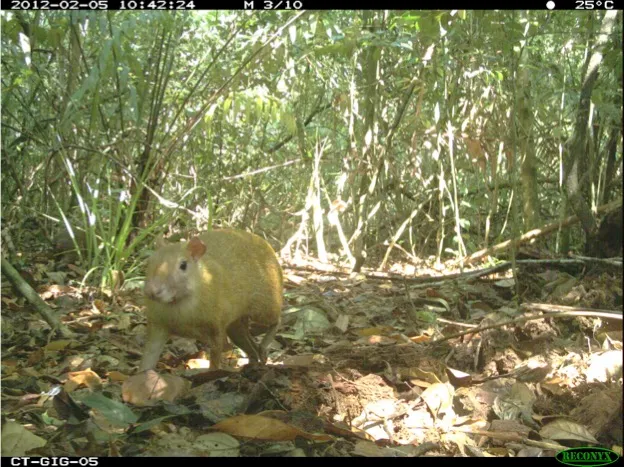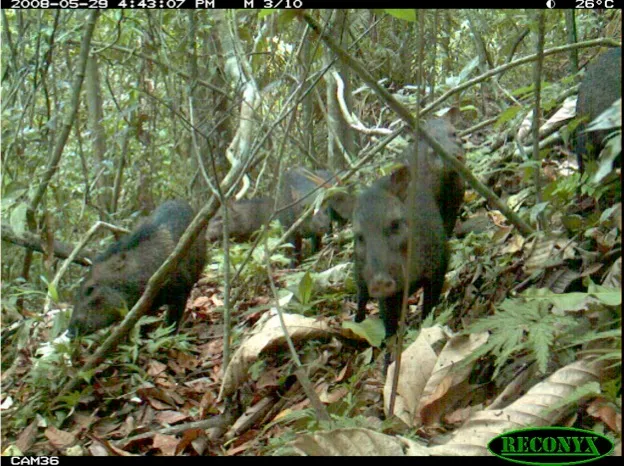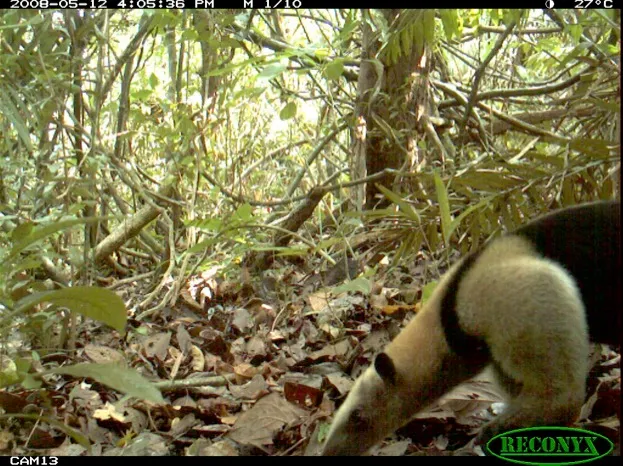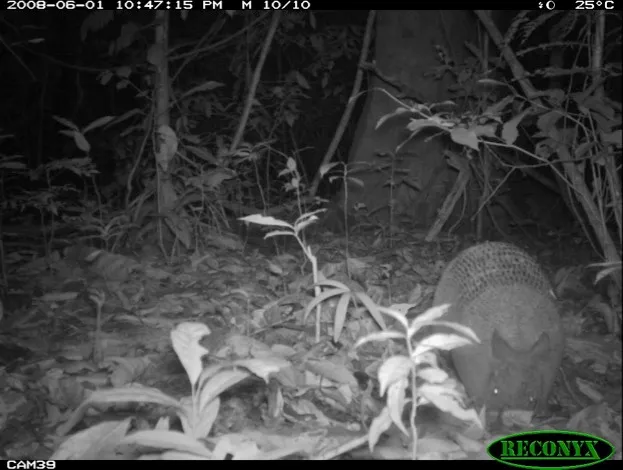How fast does an animal move?
While it’s easy to find estimates for the top speed of charismatic species such as cheetahs or brown hares, what interests conservationists just as much is how quickly they are travelling on average throughout the day and also how far they go.
Until now, scientists had to attach radio or GPS-enabled collars – expensive and invasive technology – to record this sort of data or do it by direct observation, which is extremely time consuming.
But now a team from the Zoological Society of London (ZSL) has worked out how to use remote cameras to estimate how speedy a particular species is while going about its usual day-to-day business.
They set up a network of cameras on Barro Colorado Island in Panama, recording a diverse range of species, from ocelots and anteaters to mice and rats, pottering about in the rainforest.
They viewed the videos they obtained and then calculated the distance each animal travelled in a clip and how long it took them. This gave them an average speed, and using data on how active a species is over 24 hours, an estimate for the total distance travelled during the day.
But what’s the point?
According to Dr Marcus Rowcliffe, the lead author of a paper in the journal Remote Sensing in Ecology and Conservation, it allows scientists to estimate animal abundance within a particular habitat.
And there are other potential uses, too.
“A lot of processes we are concerned about, either from an ecological or conservation point of view, depend on animals moving around and encountering each other,” Rowcliffe said. “Things like finding prey or transmitting disease.”
“Take badgers and bovine tuberculosis,” Rowcliffe continued. “A major part of that is the perturbation effect, where they discovered if you take out a portion of the badger population, they move around more.
“They found that out by radio tracking, but in principle, it would have been possible to use remote cameras – you could have tracked the increase in movement with them.”
Other possible applications, Rowcliffe added, were assessing the odds of human-wildlife conflict, particularly in areas where prey densities are low or where animals live in poorer, fragmented habitat.
Below are the average speeds and daily distances travelled of five species – they might seem very slow, but this is how animals behave when just going about their usual business.
Central American agouti Dasyprocta punctata
Speed: 0.134 m/s (0.482km/hour) Distance covered in a day: 3.25km

Collared peccary Tayassu tajacu
Speed: 0.153 m/s (0.551 km/hour) Distance covered in a day: 5.04km

Northern tamandua Tamandua mexicana
Speed: 0.195 m/s (0.702 km/hour) Distance covered in a day: 9.37km

Nine-banded armadillo Dasypus novemcinctus
Speed: 0.204 m/s (0.734 km/hour) Distance covered in a day: 6.47km

Ocelot Leopardus pardalis
Speed: 0.279 m/s (1.004 km/hour) Distance covered in a day: 8.42km

